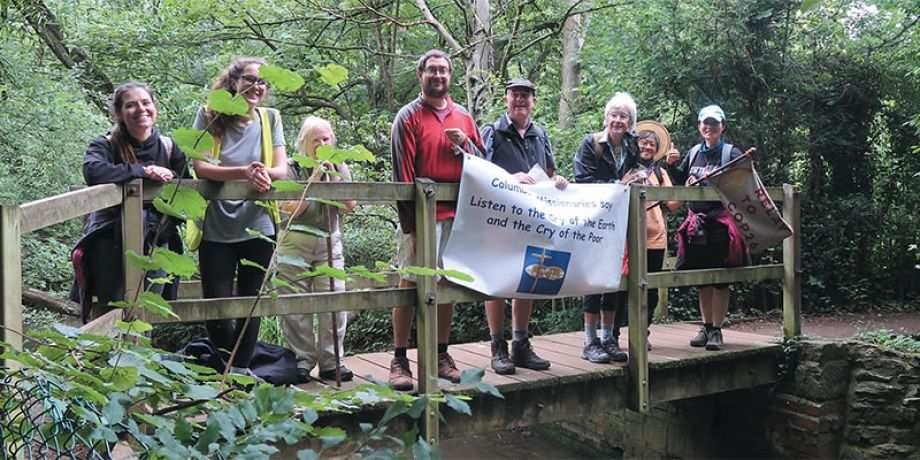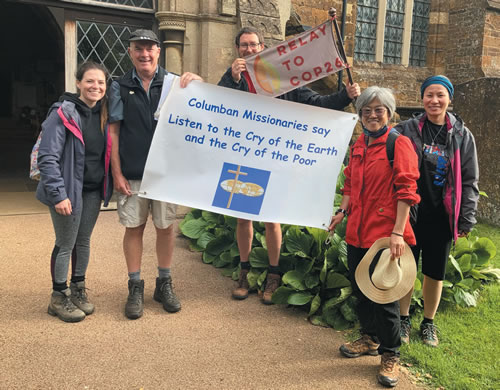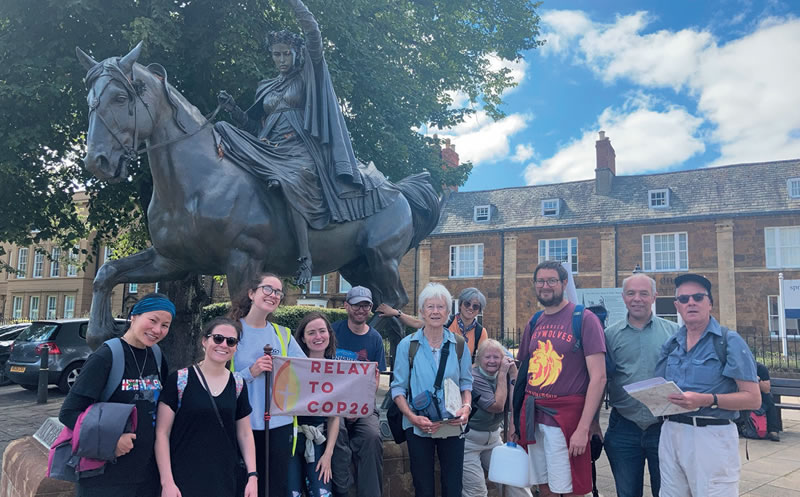
The ripening corn sparkled in the sunlight as we set off. Birds chattered in the bushes around the fields. Two copses of trees perfectly framed the tower of a mediaeval village church. In short, it was a perfect summer’s day in the heart of the English countryside.
“But you know, all this could be lost,” remarked one of my fellow walkers. “Unless we do something, everything you see now will be wiped away. That is why we have to act. And it is the young who are taking the lead.” My companion was Matt Neville, one of the organizers of this walk – a walk to save the planet.

Matt explained to me the background to this walk. In June, 2021, the U.K. hosted the annual meeting of the world’s richest countries known as the G7, at which the subject of global warming and its consequences were discussed. Coincidentally, in November 2021, the U.K. was also the venue of COP 26, so called because it will be the 26th annual United Nations conference of interested parties (governments, world leaders, international organizations) on climate change.
The G7 was in Cornwall, at the south-western tip of England. The COP 26 event will be at the opposite end of the country, in Glasgow, Scotland. A group of young Christians, inspired by figures such as Pope Francis with his 2015 encyclical “Laudato Si” and Swedish teenage activist Greta Thunberg, got together and decided it would be a great idea to walk between the two sites, criss-crossing the nation to publicize the need to act to stem global warming and its disastrous side-effects.

They would time their arrival in Glasgow to coincide with the start of the COP. This would also help put pressure on world leaders to live up to their promises to limit future warming to “manageable levels” and to help poorer nations pay for the consequences of climate change that has already happened.
The walk was designed as a relay, with different teams taking responsibility for each section – arranging itineraries, routes and accommodation. My companion Matt was part of the team in charge of the Oxford to Birmingham stretch. Some youngsters would do an entire section, staying overnight wherever they could.
In addition, others interested in the cause were invited to come along for the day, which is where I and a party of other Columban missionaries came in. Our group consisted of myself, a Columban priest, James and Emma, two of our co-workers, and Columban lay missionaries Roberta from Korea and Teresa from Malaysia lent an international flavour to the group.
Matt explained that the response had been fantastic. At every stage, the “climate pilgrims” had been offered food and accommodation in churches, schools, community centers and private homes. “In fact, sometimes the problem has been that we’ve had TOO MANY offers of hospitality, we just haven’t been able to take all of them up,” he added.

In our case, the “overnighters” had been put up in a property belonging to the local Anglican parish. We were sent on our way with a prayer and blessing conducted by the vicar. People waved encouragement to us as we meandered along the paths and through the villages of lovely rural Oxfordshire. We arrived in the afternoon at the historic town of Banbury, where we Columban “day trippers” said good-bye to our companions, who were going on to be put up for that night in the local Catholic parish.
Before parting, Matt referred to some of the other goals of these young activists. Not only to press rich countries to increase aid to poor ones, but also cancel the international debts of the very poorest nations.
Maybe these are dreams. But Pope Francis’s latest work is entitled, “Let Us Dream,” and, as his Holiness is fond of pointing out, if enough people share the same dream, dreams can become reality.
Columban Fr. John Boles lives and works in South America.